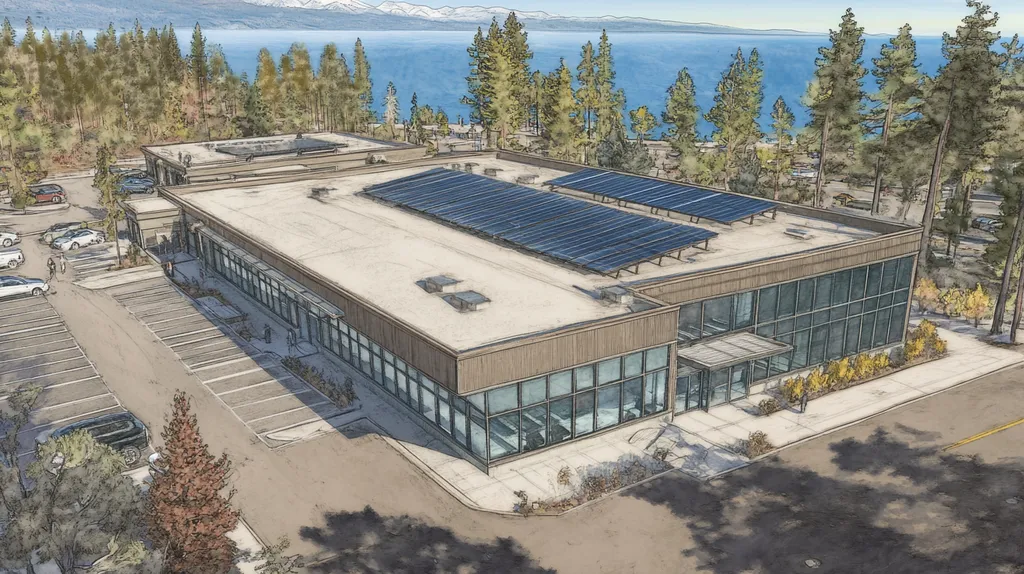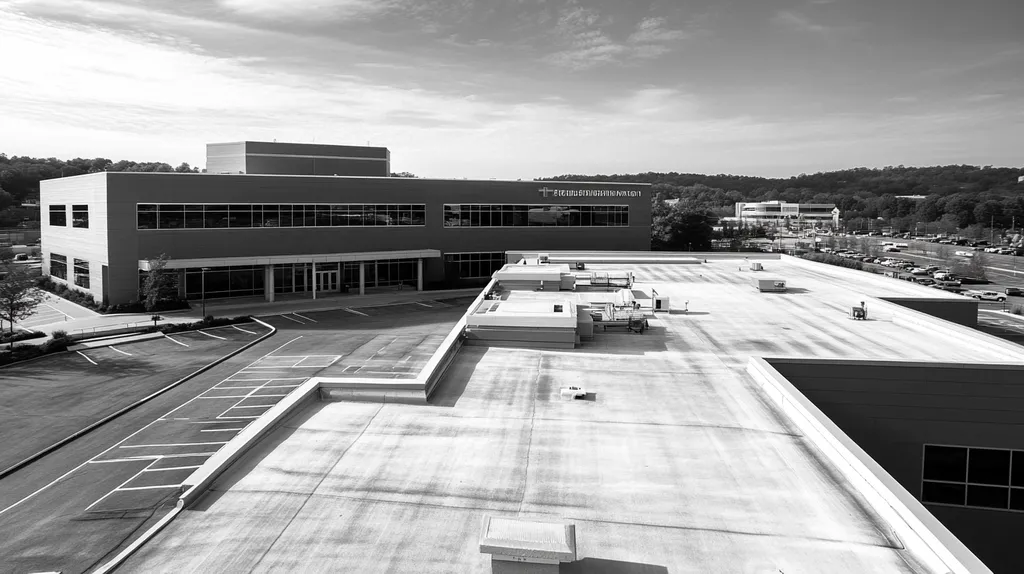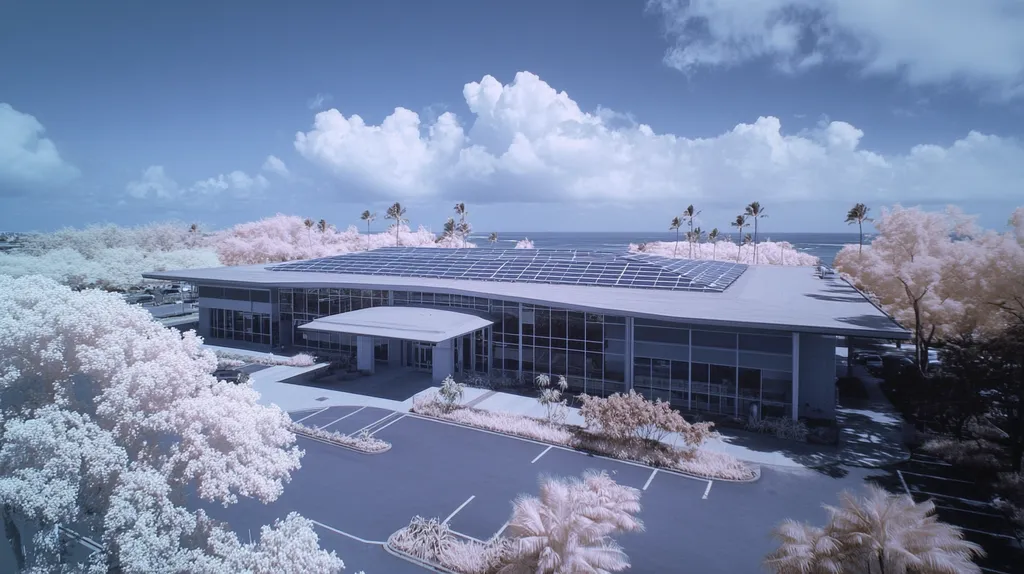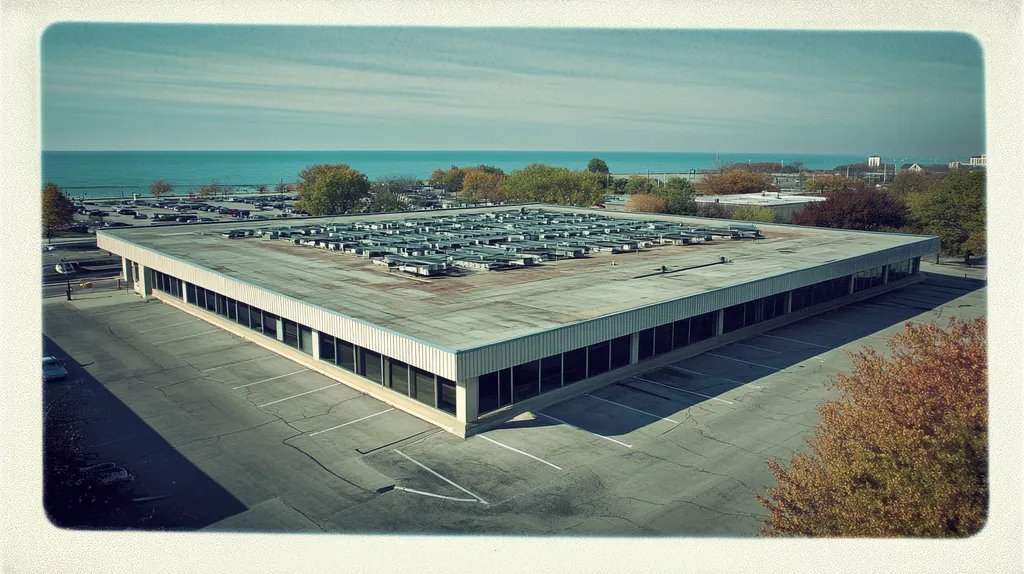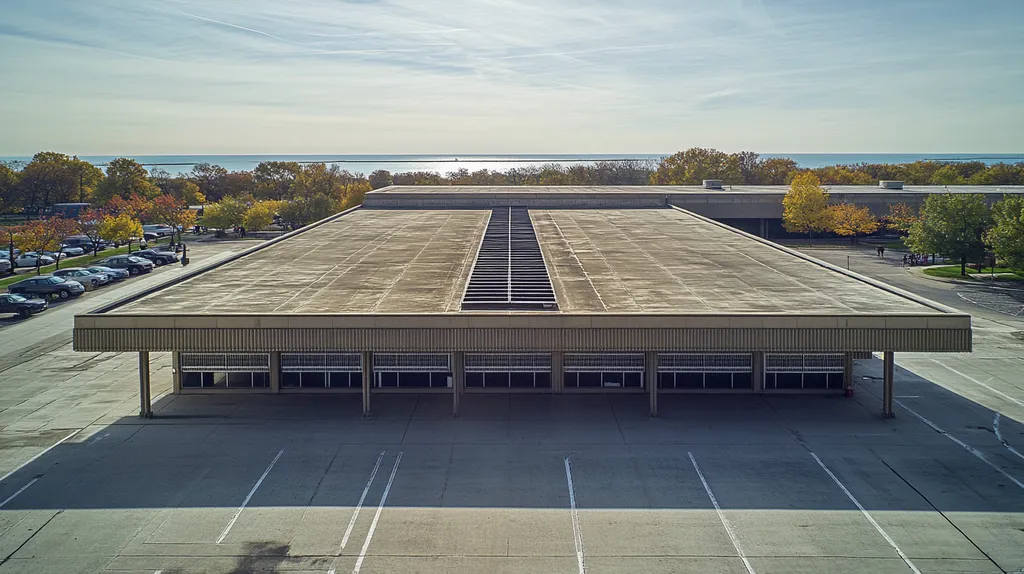In the commercial roofing industry, staying current with evolving building codes isn’t just about compliance—it’s about preventing catastrophic failures that can cost millions. Recent studies show that 40% of commercial roof collapses stem from code violations, particularly in areas of insulation and load requirements.
As 2025 building codes loom on the horizon, facility managers face mounting pressure to separate fact from fiction regarding roofing standards and practices. The stakes have never been higher, with non-compliance fines reaching up to $50,000 per violation in some jurisdictions.
This comprehensive guide examines persistent myths in commercial roofing while providing evidence-based solutions for modern facility management.
SECTION 1: COMMON MISCONCEPTIONS
Facility managers and property owners face critical decisions when it comes to commercial roofing, and misconceptions frequently cloud their judgment. Misleading beliefs about insulation and the notion of DIY repairs can expose buildings to significant risks and expenses. This section will shine a light on widespread myths about overinsulation, the reuse of wet materials, and the idea that commercial roofing can be effectively managed without professional support.
Overinsulation Myths
A common misbelief in the world of commercial roofing is that more insulation equates to better performance. Some facility managers often think that piling on insulation acts as a shield against energy loss. However, this notion can backfire, adding undue weight to the structure and compromising its integrity.
When insulation is overcompacted, its effectiveness diminishes significantly. In severe instances, roofs may buckle under excessive pressure, resulting in costly damages and disruptions to business operations. Hence, it’s crucial to adhere to appropriate insulation measures that align with local regulations.
Consulting local building codes is vital for understanding the right insulation requirements. These codes exist to strike a balance between energy efficiency and structural security. Engaging roofing professionals can provide valuable insights on optimal insulation levels tailored to a facility’s climate and design.
Neglecting these considerations can lead to major financial setbacks and potential safety issues. The right insulation not only secures the roof but also enhances energy efficiency, safeguarding the investment made in roofing.
Reusing Wet Insulation
Another pervasive myth is that wet insulation can simply be dried out and reused. Many property owners mistakenly believe that letting moisture evaporate restores insulation to its full functionality. Unfortunately, this belief is often misguided.
Reused wet insulation can become a breeding ground for mold and may suffer from a significantly reduced R-value, jeopardizing both energy efficiency and indoor air quality. While the temptation to cut costs by reusing materials exists, the hidden deterioration often leads to greater financial burdens in the long term.
According to industry standards, any insulation affected by saturation should be replaced to maintain a roof system’s effectiveness and ensure compliance with safety regulations. Utilizing compromised materials endangers the entire roofing structure.
Regular inspections are essential to catch wet insulation early on before it escalates into a larger issue. Opting for replacement of damaged insulation is a far more economical decision than risking the benefits of a robust roofing system.
DIY Commercial Roofing
The belief that commercial roofing tasks can be tackled as DIY projects is a dangerous misconception. Facility managers may be tempted to handle roofing duties themselves, believing that with enough research, they can achieve successful outcomes. However, this approach often results in compliance issues and safety hazards.
Commercial roofing systems must adhere to strict codes that demand specialized expertise and training. Professionals possess the necessary skills to navigate various materials and installation methods to ensure adherence to these regulations. Overlooking this expertise can lead to faulty installations and raise serious safety concerns.
Moreover, engaging in DIY roofing can potentially void warranties, creating complications down the road. Manufacturers generally stipulate that certified professionals must install their roofing systems to uphold warranty conditions.
Investing in professional roofing services not only guarantees regulatory compliance but also instills peace of mind. Relying on experts for maintenance and installation can help property owners avoid costly mistakes and long-term issues.
SECTION 2: PRACTICAL IMPLICATIONS
The stakes of staying informed about commercial roofing codes are higher than ever. Outdated practices not only jeopardize the structural integrity of a building but can also expose occupants to serious risks. For instance, roofs that fail to meet load capacity can buckle under heavy snowfall, leading to expensive repairs and injuries. Moreover, energy efficiency missteps from ignoring current codes can result in skyrocketing utility bills and detrimental environmental impacts. By fully grasping these critical implications, facility managers are better equipped to make decisions that protect both their investments and those within the buildings.
Structural Integrity Risks
Failing to comply with updated roofing codes can have dire consequences for a building’s structural integrity. Roofs must meet regulated load requirements to bear the weight of snow, rain, and equipment. Ignoring these essential codes heightens the risk of catastrophic roof collapses, putting both property and lives in jeopardy.
Furthermore, the integration of roofing materials must withstand environmental pressures, such as wind and moisture. If not properly addressed, these factors can lead to long-term damage, including leaks and rot that may necessitate extensive repairs and costly overhauls.
Beyond the immediate costs of repairs, structural deficiencies can lead to increased insurance premiums. A history of poor safety records can signal to insurers that a building is high risk, causing budgets to stretch even further.
Ultimately, neglecting structural integrity isn’t just an oversight; it could result in life-threatening accidents or extensive property loss. Adhering to roofing codes is, therefore, an absolute necessity for the well-being of any facility.
Energy Efficiency Missteps
Keeping current with commercial roofing codes is critical for maximizing energy efficiency. Many older roofing systems are simply not equipped to meet today’s energy standards, which can inflate heating and cooling costs. Surprisingly, a poorly insulated roof can increase energy expenses by nearly 30%.
New materials and installation techniques have evolved to promote energy efficiency. Compliance with updated codes often includes innovations like reflective surfaces and advanced insulation options, which dramatically lower operational costs over time.
Non-compliance not only puts pressure on budgets but also increases a building’s environmental footprint. Higher energy consumption leads to greater greenhouse gas emissions, conflicting with the sustainability initiatives that many organizations strive to achieve today.
By embracing code-compliant roofing solutions, facility managers can secure significant cost savings while simultaneously supporting environmental responsibility, showcasing their commitment to a greener future.
Safety and Compliance Issues
Upholding updated commercial roofing codes is intricately linked to the safety of operations. Non-compliance can introduce severe safety hazards, especially during extreme weather events. For example, roofs lacking wind resistance can become highly vulnerable to damage during storms, endangering both the structure and its occupants.
Building safety regulations also include mandates for worker safety during maintenance activities. Ignoring these codes can expose facility managers to legal repercussions and mounting liabilities should an accident occur on-site.
In addition, a pattern of code violations may result in enhanced scrutiny during inspections. Increased regulatory oversight can lead to additional costs and disruption of normal operations, affecting overall business productivity.
Ultimately, maintaining compliance with current roofing codes is not merely a matter of legal obligation; it is foundational to ensuring employee safety while shielding the organization from potential financial and reputational repercussions.
SECTION 3: COST OF MISINFORMATION
Misinformation in the realm of commercial roofing codes can lead to serious financial repercussions. Property owners and facility managers often overlook the significant costs associated with outdated practices and poor insulation. For instance, facilities with inadequate insulation can see energy bills soar by as much as 30%, imposing strain on budgets and hampering operational efficiency. Recognizing these issues is critical in avoiding costly errors related to emergency repairs and penalties for non-compliance.
Financial Consequences of Poor Insulation
When insulation falls short of current standards, the financial burden on a building can be considerable. Increased energy consumption is often the unfortunate result of inadequate insulation, driving up utility expenditures. Studies indicate that properties with insufficient insulation can be wasting thousands of dollars each year on excess energy costs.
Moreover, inefficient energy use places extra demands on HVAC systems. These systems must work harder to maintain comfortable temperatures, leading to premature wear and costly replacements.
The financial consequences extend beyond immediate expenses; they can also impact property values and hinder future investments. By staying updated on insulation requirements, facility managers can maintain energy efficiency, preserving both financial resources and enhancing the overall value of their buildings.
Emergency Repair Costs
Neglecting minor roofing issues due to misinformation can escalate into urgent repair situations. Small problems, if left unattended, can develop into severe leaks and structural damage. This often results in unanticipated expenses that could have been avoided with proper maintenance.
For instance, a minor roof leak that goes unaddressed might result in extensive water damage, costing facility managers thousands in repairs and lost business revenue. Emergency repair costs can multiply quickly—especially if a full replacement becomes necessary.
Understanding and adhering to current roofing codes is essential for effective maintenance and timely repair. By adopting a proactive approach, facility managers can protect their financial resources and mitigate the risk of significant damage.
Plus, emergency repairs can disrupt operations and create a ripple effect that impacts productivity and revenue. Investing time in comprehending roofing codes can substantially reduce the likelihood of encountering these costly emergencies.
Compliance Fines and Penalties
Remaining compliant with commercial roofing codes is vital, as violations can result in hefty fines and penalties. Regulatory bodies enforce these codes not only for safety but also for efficiency. Failing to meet these standards can lead to significant financial implications.
For example, some jurisdictions impose fines that can total thousands of dollars for non-compliance. Additionally, unresolved issues may necessitate mandated repairs, compounding expenses further.
Non-compliance can also threaten insurance coverage. Some insurance providers may refuse payouts if a property does not meet safety regulations, leaving property owners to cover unexpected costs alone.
Staying informed about roofing codes is essential—not only to avoid fines but to improve safety standards. A commitment to compliance safeguards financial investments while also protecting the well-being of building occupants, embodying a responsible and diligent approach to facility management.
SECTION 4: REALITY CHECK
Being current with roofing codes isn’t just a formality; it’s fundamentally important for protecting property and investments. Ignoring updated codes can lead to serious safety hazards, legal troubles, and high repair costs. Recent data reveals that buildings adhering to the latest codes are 30% less likely to sustain major damage during extreme weather events. This section focuses on key updates in building codes, the significance of FORTIFIED standards, and the importance of local climate considerations.
Updated 2025 Building Codes
The upcoming 2025 building codes are set to introduce important changes that will impact roofing standards. These updates are designed to improve safety and resiliency, especially in regions susceptible to severe weather. Facility managers must recognize that ignoring these codes could result in penalties and higher insurance costs.
For example, new regulations will mandate better insulation and reflective roofing systems to improve energy efficiency. These enhancements can cut energy consumption by up to 25%, resulting in significant savings. Additionally, properties that comply with these new environmental requirements are more likely to attract tenants who value sustainable practices.
Furthermore, roofing materials must now meet revised fire and wind resistance tests, particularly in hurricane-prone areas where roofs must endure winds of up to 130 mph. This may require facility managers to reassess the materials currently used on their roofs.
Collaborating with experienced contractors will be crucial for adapting to these changes smoothly. They can offer guidance on selecting materials and designs that conform to the new rules. Being informed about these codes helps prevent costly mistakes and promotes the long-term durability of buildings.
FORTIFIED Resilient Construction Standards
FORTIFIED construction standards mark a significant shift in roofing, emphasizing resilience against natural disasters. Structures built or retrofitted according to the FORTIFIED program are engineered to withstand extreme weather conditions effectively. This approach is especially beneficial for properties located in regions frequently impacted by hurricanes or severe storms.
Utilizing FORTIFIED materials can reduce insurance claims by up to 50%. This not only lowers costs but increases property desirability. Research indicates that buildings compliant with these standards often have higher resale values.
Additionally, FORTIFIED standards stress the necessity of adequate attic ventilation and robust drainage systems. These features help manage moisture levels, preventing damage associated with mold and deterioration. Investing in FORTIFIED standards can lead to lower maintenance expenses over the long run.
Facility managers should actively consider obtaining FORTIFIED certifications. Aligning roofing practices with these standards not only enhances safety but also bolsters community resistance to the adverse effects of climate change.
Local Climate Considerations
Local climate is a critical factor in roofing decisions, necessitating region-specific strategies. Understanding the weather patterns unique to each area can greatly influence the lifespan and effectiveness of roofing systems. For example, implementing cool roofs in hot climates can reflect sunlight and decrease cooling costs significantly.
Facility managers need to assess their roofs based on local climate risks, such as hail, heavy snowfall, and intense UV radiation. In regions prone to hailstorms, for instance, specialized materials that offer enhanced protection and warranties may be required to avoid costly replacements.
Moreover, climate zones determine the appropriate insulation types and thicknesses needed. In hotter areas, maximizing R-values is essential, whereas colder climates may prioritize air sealing to prevent heat loss. Tailoring roofing solutions to these environmental factors is crucial for maximizing durability and performance.
Engaging with local roofing professionals will be invaluable in ensuring compliance with climate-specific codes. These experts can provide insights into the best materials and techniques suited for particular environmental conditions, ensuring both regulatory compliance and optimal function.
SECTION 5: EVIDENCE-BASED ALTERNATIVES
As commercial roofing codes evolve, the pressure on facility managers to comply with these stringent regulations increases significantly. Failure to adapt to these updates can result in compliance risks, costly repairs, and even hazardous situations. To navigate this complex landscape effectively, it’s essential to adopt evidence-based alternatives that prioritize safety and efficiency. This section delves into three pivotal areas: proper insulation installation, the importance of hiring certified roofing contractors, and the advantages of selecting energy-efficient roofing materials.
Proper Insulation Installation
Insulation is a cornerstone of a building’s energy efficiency. When it is improperly installed, significant heat loss or gain can occur, negatively impacting energy consumption and costs. Utilizing the right insulation materials and techniques is not just beneficial; it’s critical for adhering to evolving codes.
Achieving the recommended R-value in insulation can lead to substantial reductions in heating and cooling expenses. Unfortunately, many buildings continue to underperform, resulting in inflated energy bills and larger carbon footprints. Facility managers must prioritize insulation that meets or exceeds current regulatory standards.
Moreover, proper installation not only beings economic advantages but also extends the lifespan of the roof. A well-insulated roofing system effectively resists moisture buildup, which can prevent deterioration and maintain the integrity of the building.
It’s crucial for facility managers to have a solid understanding of different insulation types and installation methods. Collaborating with knowledgeable contractors who are well-versed in current codes can lead to compliant and effective solutions that enhance the building’s overall performance.
Certified Roofing Contractors
Engaging certified roofing contractors is essential for ensuring that installations and repairs align with the latest commercial roofing codes. The landscape of building regulations changes frequently, often becoming more intricate; only trained professionals are equipped to navigate these complexities effectively.
Certification demonstrates adherence to established industry standards, ensuring that contractors use the latest best practices in materials and techniques. This not only results in improved long-term performance of roofing systems but also eases the compliance burden on facility managers.
Working with certified contractors often enhances warranties and service agreements. Many roofing manufacturers stipulate that only certified professionals can perform installations to validate their warranties, providing additional financial protection for property owners.
In essence, selecting certified contractors is not merely wise; it is a crucial step in securing investments and ensuring compliance. Facility managers should actively seek out professionals with the appropriate credentials to safeguard their properties while adhering to regulatory requirements.
Energy-Efficient Roofing Materials
With rising energy costs and tightening environmental regulations, energy-efficient roofing materials are of paramount importance. These options not only enhance a building’s energy profile but also contribute positively to its lifecycle performance.
For instance, reflective roofing materials can significantly cut cooling costs by minimizing heat absorption. Implementing “cool roofing” strategies can lead to lower emissions and create a more comfortable environment for building occupants. Staying abreast of these trends is essential for facility managers.
Additionally, many energy-efficient materials are eligible for energy credits and rebates, providing upfront savings while reducing ongoing operational costs. Properties that incorporate sustainable materials also tend to have a competitive edge in attracting eco-conscious tenants.
Ultimately, investing in energy-efficient roofing solutions isn’t just about compliance—it’s about future-proofing facilities. Facility managers should remain informed about available innovative materials and proactively integrate them into their roofing strategies to ensure long-term success.
SECTION 6: TEST AND VERIFY
For facility managers, the imperative of ensuring that commercial roofs comply with constantly evolving codes cannot be overstated. Inadequate maintenance can lead to serious failures—research indicates that around 30% of roof failures are attributed to insufficient upkeep. This section examines the necessity of setting up routine inspection schedules, testing for wind-driven rain, and adhering to ASCE 7 standards.
Routine Inspection Schedules
Regular inspections are essential to preserve the integrity of commercial roofing systems. Establishing a reliable inspection schedule enables facility managers to detect potential issues before they escalate into costly repairs. Ideally, inspections should be conducted at least twice a year—often in the spring and fall, aligning with best practices in the industry.
Each inspection should address key elements such as membrane integrity, drainage systems, and flashings. Qualified professionals should examine these areas for signs of wear, damage, or other concerns. Early identification of issues not only extends the life of the roof but also ensures alignment with local codes.
Furthermore, maintaining detailed records of inspections and repairs is vital for compliance purposes. These logs serve as critical documentation during real estate transactions or routine audits, highlighting a proactive maintenance approach that enhances property value.
Ultimately, consistent inspections empower facility managers to make informed decisions that prevent unexpected expenses and uphold high standards of safety and efficiency.
Testing for Wind-Driven Rain
Wind-driven rain presents a formidable challenge to the longevity of commercial roofing systems. Facility managers must assess their roofs’ vulnerabilities to this threat. Conducting tests for wind-driven rain identifies weaknesses in roofing materials and installation methods, enabling proactive measures to mitigate weather-related damage.
Skilled laboratories and certified professionals conduct tests under various wind and water exposure conditions to simulate potential real-world scenarios. This testing provides critical information that informs ongoing maintenance efforts.
Also, localized weather patterns should guide testing protocols. For instance, roofs situated in hurricane-prone regions may require more stringent testing to ensure they meet safety standards. By integrating these local climate considerations, facility managers can stay compliant with evolving codes and prioritize safety.
Recognizing the effectiveness of a roof against wind-driven rain demonstrates commitment to occupant safety. Investing in these assessments shows that facility managers prioritize resilience and reliability in their buildings.
Compliance with ASCE 7 Standards
Meeting ASCE 7 standards is crucial for ensuring that commercial roofs can endure adverse weather conditions. These standards outline guidelines for wind loads, snow loads, and seismic considerations, forming a comprehensive framework for roof design and construction.
Facility managers must ensure that their roofs adhere to or surpass ASCE 7 requirements to protect against potential damage. This process requires careful evaluation of load factors, which can vary widely by geographic area. For example, roofs in high-wind zones often need additional reinforcements to satisfy these standards.
Consulting with roofing professionals who are knowledgeable about ASCE 7 can streamline the compliance process. They can perform thorough assessments and provide recommendations that align with the latest standards, mitigating risks for property owners.
Incorporating ASCE 7 standards not only enhances safety but can also lower insurance costs. Insurers frequently offer favorable rates for buildings that comply with stringent codes, reflecting reduced risk. By prioritizing adherence to these standards, facility managers bolster both safety and financial stability.
Looking Ahead
As commercial roofing codes continue to evolve at an unprecedented pace, the cost of non-compliance has never been higher, with fines reaching $50,000 per violation and insurance companies increasingly denying claims for code-related failures.
The transition to 2025 building codes presents both challenges and opportunities for facility managers who stay informed and proactive.
Studies show that buildings adhering to updated codes are 73% less likely to experience catastrophic roof failures during extreme weather events.
By embracing evidence-based practices, following FORTIFIED standards, and partnering with certified contractors, facility managers can protect their investments while ensuring occupant safety.
The evolution of commercial roofing from simple tar-and-gravel systems to today’s high-performance materials reminds us that staying current with codes isn’t just about compliance—it’s about leading the industry into a more resilient future.
FREQUENTLY ASKED QUESTIONS
Q. What are common misconceptions about commercial roofs?
A. Many facility managers mistakenly believe that overinsulating their commercial roofs enhances their performance. This myth can lead to serious structural issues, such as roof buckling due to excessive weight. It’s vital to understand the insulation requirements stated in local codes to ensure safety and efficiency.
Q. How do outdated commercial roofing codes affect safety?
A. Ignoring updated commercial roofing codes jeopardizes a facility’s safety and structural integrity. Buildings that do not meet current load capacity may collapse under severe weather conditions, putting both property and lives at risk. Staying informed about these codes helps facility managers protect their investments.
Q. What financial impacts can misinformation on commercial roofs have?
A. Misinformation about commercial roofing codes can lead to severe financial repercussions, such as inflated energy bills and costly emergency repairs. Properties with inadequate insulation often experience excessive energy costs, making it essential for facility managers to stay updated with code changes to avoid these pitfalls.
Q. Why are updated roofing codes necessary for compliance?
A. Updated roofing codes reflect advances in safety measures and efficiency standards, making them integral for compliance. Ignoring these updates can lead to legal issues, increased repair costs, and safety hazards. Facility managers must understand and comply with these evolving codes to protect their properties.
Q. How do local climate conditions affect industrial roofs?
A. Local climate conditions play a crucial role in roofing decisions, impacting material selection and installation techniques. Regions with extreme weather may require specific solutions, like cool roofs for heat or durable materials for hail protection. Facility managers must tailor their approaches to match local climate challenges.
Q. What routine maintenance should be done on commercial roofs?
A. Routine maintenance involves frequent inspections to check for membrane integrity, drainage systems, and flashings. Establishing a reliable inspection schedule helps identify potential issues early, preventing costly repairs and ensuring compliance with local codes. Maintaining detailed records of all inspections is essential for property value.
Q. How can certified contractors ensure compliance with roofing codes?
A. Certified contractors are essential for ensuring compliance with the latest commercial roofing codes. They understand complex regulations and employ best practices for installation and maintenance, minimizing the burden on facility managers. Engaging these experts enhances warranties and secures property investments against costly violations.

